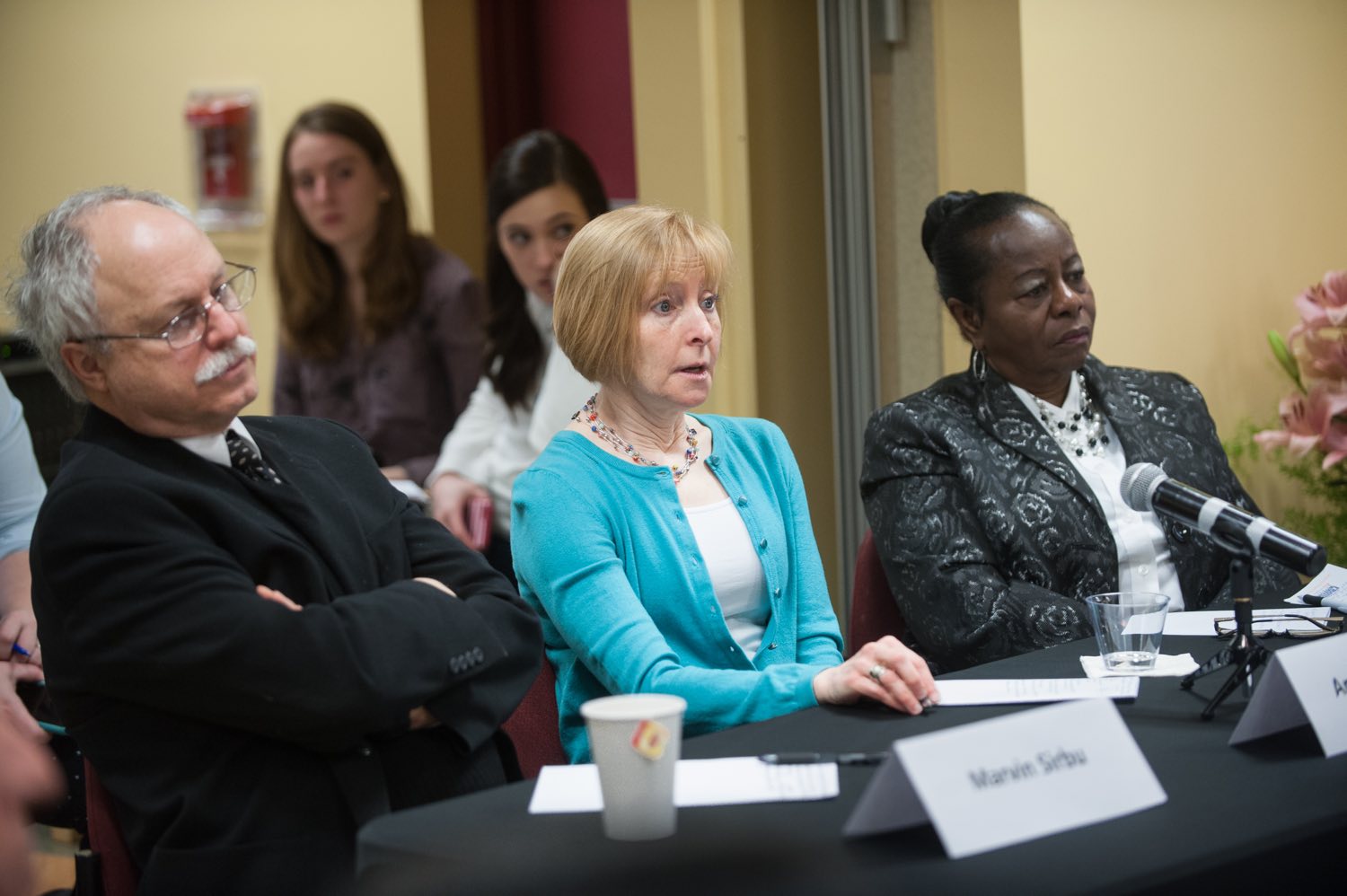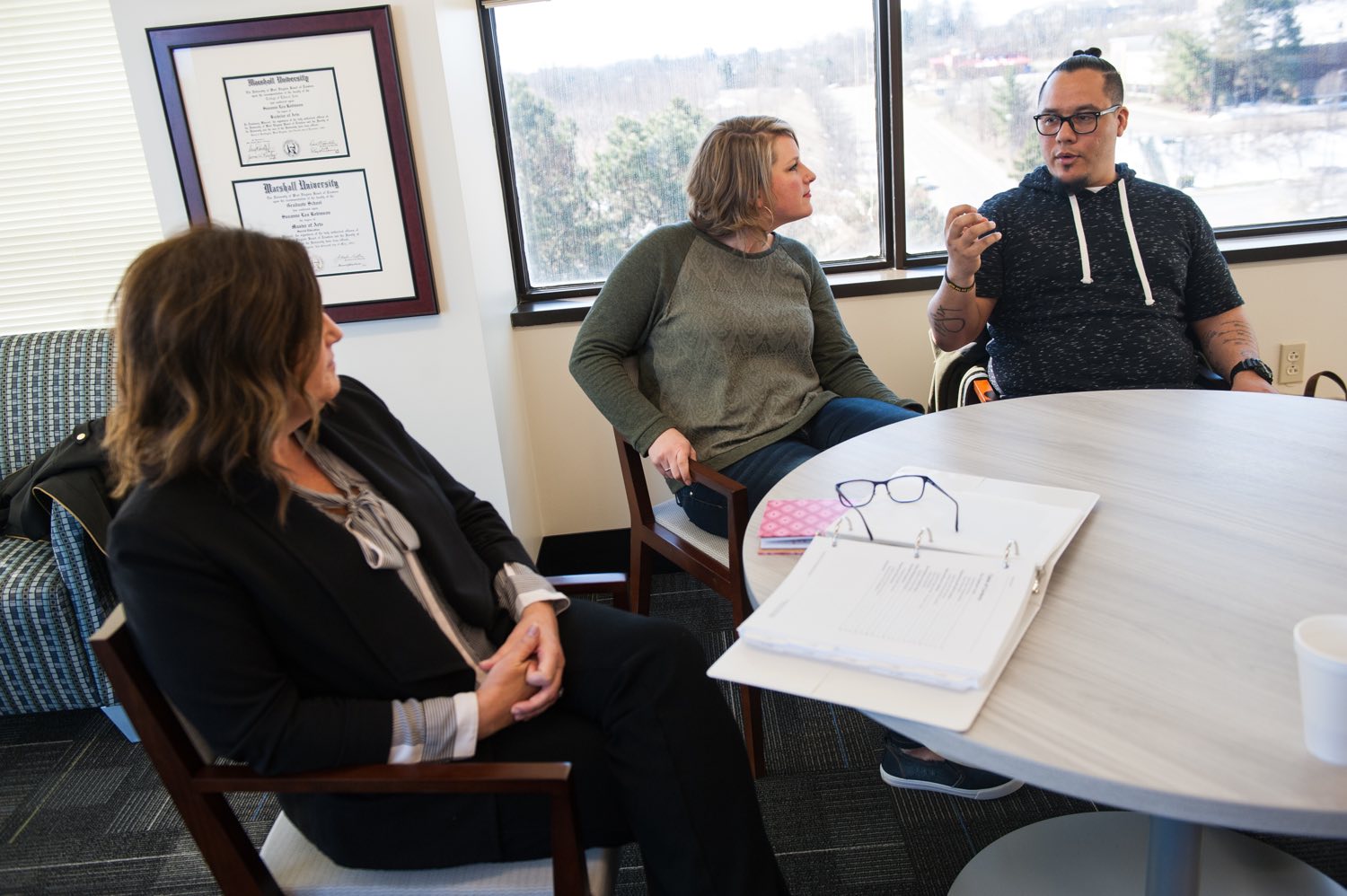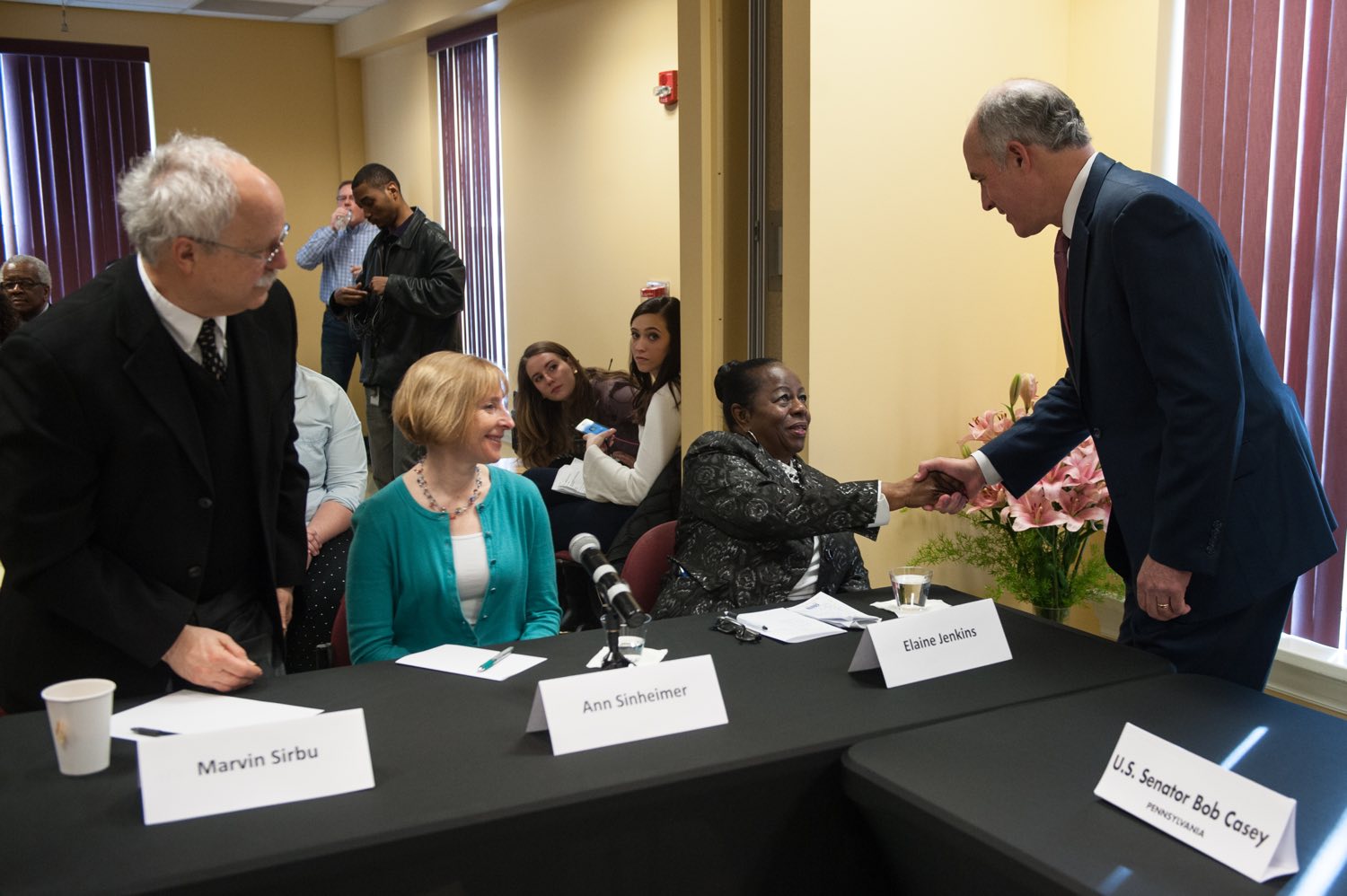The needle in the family tree
From children to grandparents, whole families are caught up in the opioid crisis
Opioids swamping child welfare system
April 30, 2018
Story by Rich Lord
Photography by
Stephanie Strasburg
Part 2 of 2
Part 1 | Keeley and the Vial
Share your story on the opioid epidemic
Reporter Rich Lord and the Pittsburgh Post-Gazette want to hear how your family has been affected by the opioid epidemic. Your responses will be considered for publication. Email rlord@post-gazette.com with any questions or concerns you might have before sharing your stories.
First came an anonymous tip that a young girl was living in a building with no utilities. When police arrived at the boarded-up apartment on East Warrington Avenue, in Allentown, they saw no sign that anyone was inside, and no clear way in.
A half-hour later on that September morning last year, though, another call reported an overdose at that address. Medics busted in, and revived Connie Hartwick, 46, from a heroin overdose, according to a police affidavit.
There was no running water, and the place was a mess, officers wrote: There were “multiple bottles filled with human urine. There were broken windows and collapsed ceilings. Officers also found bird and cat feces on the floors throughout the building and apartment.”
And in the midst of it all was the woman’s daughter, age 9. The father? “Shawn Grant, 38, of Duquesne Heights, had just overdosed at another location and was being treated by medics,” police wrote.
Both parents were charged with child endangerment, and neither could be reached for comment. The child was taken to Children’s Hospital of Pittsburgh of UPMC, police wrote, to be turned over to Allegheny County Children Youth and Families.

From left to right, grandparents Marvin Sirbu, 72, of Oakland, Ann Sinheimer, 54, of Oakland, and Elaine Jenkins, 73, of Monroeville, tell U.S. Sen. Bob Casey (D-PA) about raising their multiple grandchildren as seniors as they discuss Sen. Casey's new bipartisan legislation, the Supporting Grandparents Raising Grandchildren Act (S. 1091) on Monday, April 9, 2018, at A Second Chance in East Hills. (Stephanie Strasburg/Post-Gazette)
In the past two years, CYF has seen the number of calls to its ChildLine abuse and neglect hotline rise by around 20 percent, with a similar increase in the number of kids placed in the custody of someone other than their parents. The opioid epidemic is driving those numbers, said Marc Cherna, director of the county Department of Human Services, which includes CYF.
In the 23 counties of Western Pennsylvania, agencies had placed 4,037 children outside of their homes as of September, up 14 percent over two years. The increase was driven largely by cases in which parental drug use was a factor.
"Parental substance abuse,” said Teresa Miller, secretary of the state Department of Human Services, “is now the number one reason that children are removed from the care of their parents.”
The state, counties and human service organizations are trying to reverse the trend.
“If we can help these families so that these kids don’t have to be removed from the home, it is less expensive” and better for everyone, said Mr. Cherna, whose agency now manages 1,500 kids in foster care -- around two-thirds of them placed with family or friends. “Kids do best with their families.”
Deadly on contact
Some people can parent despite addiction -- for a while. But a sample of the past year’s child endangerment cases shows the many ways drugs lead to neglect, or danger.
- Dawn Spring, 39, of Carrick, was charged after she was revived from an apparent overdose using the opioid reversal drug naloxone. Police found stamp bags and alprazolam pills, a needle and a spoon, they wrote in an affidavit. A young man, age 18 and a boy, 11, were in the house, which police described as “deplorable. The bedrooms on the second floor were covered in clothes, food containers and garbage. The two rooms that were for the kids both had mold and missing sections of ceiling.”
- Crystal Dawn Cumberland, 27, of North Union Township, was charged after her infant, around 3 months old, nearly died from a fentanyl overdose, according to police.
- Lisa Arrigo, 39, of Overbrook, passed out in a car behind Pittsburgh Whittier K-5 school, with her 8-year-old son in the front passenger seat, police wrote in an affidavit. Officers found a hypodermic needle next to the driver’s side door.
- Latasha Hall, 27, of Fineview, was charged with possession of drugs with intent to deliver and child endangerment when police said they found nine sealed bricks (each roughly 50 stamp bags) of heroin, plus assorted other stamp bags and crack, in an apartment also occupied by her two children, according to the affidavit. The heroin “was easily accessible to the juveniles on the scene,” police wrote, and its potency “has a very high chance of causing an overdose related death in juveniles if they were to come into contact with it.”
- Kasey Dischman, 31, of East Butler, was charged with aggravated assault of an unborn child after she overdosed on heroin while seven months pregnant, forcing doctors to perform an emergency cesarean section, according to police. The mother and baby survived.
Read part 1 of The needle in the family tree
Keeley and the Vial
Taking the baby away
With more and more babies born in withdrawal from opioids, hospitals, caseworkers and courts are increasingly faced with the wrenching question of whether to take a newborn from its mother.
Last year, 15 out of every 1,000 Pennsylvania newborns were born with neonatal abstinence syndrome -- the medical term for withdrawal from opioids due to maternal use -- according to the Pennsylvania Health Care Cost Containment Council. That rate, mirrored in Allegheny County, is 10 times what it was 16 years ago.
The birth of a baby in withdrawal usually prompts the hospital to call ChildLine. If the hospital believes that the child would be in danger in the custody of the parents, it can take the child into protective custody, and alert the county within 24 hours. The county must then get the matter before a judge within 72 hours.

Foster parents Hannah, center, and her husband Jesus Origel, both 30, of Brighton Heights, talk with Pressley Ridge president Susanne Cole, left, at the agency's offices in McCandless. In Ohio and West Virginia, the opioid epidemic has dislodged so many children that it’s becoming difficult to find enough foster parents like the Origels, Cole said. (Stephanie Strasburg/Post-Gazette)
As a result, counties and human service agencies need foster parents willing to take an infant on very short notice, for a $21 a day stipend. A few rise to that challenge.
Last year, 15 out of every 1,000 Pennsylvania newborns were born with neonatal abstinence syndrome -- the medical term for withdrawal from opioids due to maternal use.
“We had the privilege of going to the hospital and picking the baby up,” said Jesus Origel, 30, of Brighton Heights. He and his wife Hannah, 30, have fostered around a dozen children, including one born in withdrawal.
That child was less than a week old when the Origels took it in, they said, in an interview in which they were careful not to reveal any hint of the baby’s identity. The baby had tremors, severe rashes, and constant cravings for swaddling, motion and something to suck on, said Mrs. Origel. Initially, the two were up much of the night, which was tough because they both work and care for their four children.
“Thirty days later it was like a new child, because of nutrition and care and the detox,” said Mrs. Origel. After five months, they had to say goodbye, as the baby went to an adoptive household with one of its siblings.
“I know I got to play a role in that child’s life and I saw tremendous healing,” said Mrs. Origel. They’ve kept in touch with the adoptive family of the child, who recently turned 3.
The Origels work with Pressley Ridge, a McCandless-based nonprofit that specializes in helping families in challenging situations.
Pressley Ridge, which operates in six states, has been able to find families for all of the opioid-affected children referred to it by the Allegheny County Department of Human Services, said agency president Susanne Cole. But in Ohio and West Virginia, the opioid epidemic has dislodged so many children that it’s becoming difficult to find enough foster parents, she said. “The numbers are huge,” she said, “and it’s not going away.”
Do you appreciate good journalism? If you do, consider subscribing.
Support journalism. Subscribe today.

If you are a loyal subscriber, thank you for your support.
Drugs alone aren’t enough
Occasionally, the connection between a parent’s drugs and a child’s health is direct and indisputable.
For instance, last year in Philadelphia, a 10-month-old girl turned “blue and nonresponsive,” and had to be revived with the anti-overdose drug naloxone, after she rolled over onto her father’s heroin needle, according to recently released state Department of Human Services reports. Separately, an 8-year-old Philadelphia girl needed naloxone when she consumed opioids, cocaine and medications. Both girls were taken from their parents and placed with family members.
A study led by University of Chicago researchers, published in the journal Pediatrics in March, found that for people under 20 years old, the incidence of hospitalization for prescription opioid poisoning nearly doubled from 1997 to 2012. The biggest increase was among kids ages 1 to 4, which the authors blamed on “the exploratory nature of young children.”
Nonetheless, parental drug abuse alone isn’t justification enough to remove a child from a home under Pennsylvania laws, noted Cathleen Palm, founder of the Center for Children's Justice, based in Berks County.
State law says that courts can rule a child dependent -- and remove her or him from parents indefinitely -- if the child lacks "proper parental care or control," and for related reasons. The court has to find that staying in the home would be "contrary to the welfare, safety or health of the child," and that all reasonable alternatives have been tried. Then the court has to seek circumstances “best suited to the safety, protection and physical, mental, and moral welfare of the child.”

From left to right, grandparents Marvin Sirbu, 72, of Oakland, Ann Sinheimer, 54, of Oakland, and Elaine Jenkins, 73, of Monroeville, greet U.S. Sen. Bob Casey (D-PA) before a panel to discuss Sen. Casey's new legislation on supporting "Grandfamilies" on Monday, April 9, 2018, at A Second Chance in East Hills. (Stephanie Strasburg/Post-Gazette)
Addiction is rarely the only problem a troubled family faces, Ms. Palm said, and complex problems require thoughtful solutions.
“There’s childhood trauma. There’s unstable housing. There’s accessing the right kind of treatment,” she said. “If we don’t understand that, then we may not really have enough put in place to help [a mother] and this family avoid what can be pitfall after pitfall after pitfall.”
One innovative option: Removing the whole family from the home, temporarily.
Allegheny County recently picked the nonprofit Auberle to create a new drug rehab facility that would accept as many as eight entire families. The location of the facility and the precise contract terms aren’t yet final, but Mr. Cherna hopes it will be open by year’s end.
In March, in another county-funded effort, Holy Family Institute started providing drug treatment and parenting counseling in the homes of drug-dependent parents with children under 3. They’re using an approach proved effective by Yale University researchers but never before tried outside of Connecticut.
Gov. Tom Wolf’s budget calls for $4.5 million to back evidence-based home visiting programs, particularly for areas hit hard by the opioid crisis.
“There’s childhood trauma. There’s unstable housing. There’s accessing the right kind of treatment.”
"We've tried to encourage innovation,” said Cathy Utz, deputy secretary in charge of the state Office of Children, Youth and Families. The state normally pays 80 percent of county child welfare costs. But when a county uses “promising practices” with some research behind them, the state pays 90 percent of the tab. And when a county uses programs backed by firm evidence of effectiveness, the state covers 95 percent.
Allegheny County has a growing program meant to show teens in drug-affected and troubled homes that things can get better, staffed by people who came up in tough situations.
Aaron Thomas' late father was a heroin addict and his late mother used crack, he said in April. Mr. Thomas said he used to walk out the door of their Garfield Heights apartment to sell crack, knowing that his parents would soon be leaving to buy drugs.
Now 38, he is the assistant director of Allegheny County's Youth Support Partners unit, which employs 25 people who came from troubled homes. They counsel some 400 young people in the child welfare or criminal justice systems.
Mr. Thomas said he and some of the other partners know “what it's like to hear people in and out of your house at all hours of the night, and wonder if your shoes are going to be missing or if you'll have anything to eat” in the morning.
He says the first order of business for the partners is to make a connection with the young person, then to instill some hope. Next, mentor the young person and help them toward their goals -- getting a driver's license, a diploma, college, a job or improved housing.
“Teenagers hate when you tell them what they need,” he said. “Our Youth Support Partners are saying, 'Well, tell me about your needs.’”
Grandparents: the new safety net
Outside of the foster care system, an estimated 82,000 Pennsylvania grandparents are caring for 89,000 grandchildren -- numbers swelled by the opioid crisis, state Rep. Kathy Watson, a Bucks County Republican, said in March, when she introduced a package of bills on the subject. The numbers are based on a review of census data by Pennsylvania Partnerships for Children, a Harrisburg-based nonprofit, which said they do not include grandchildren placed with their grandparents through the foster care system.
The grandparents are saving the state close to $1 billion a year by keeping the children out of the foster care system. But is it a good deal for the grandparents?
“They're in their early 60s and they've got a job, and I'm sure they were thinking about retirement at some point,” said Ms. Miller. “All of a sudden they find themselves in a situation where they have three grandchildren they are raising, and they're all under 10.”
One pending bill would allow grandparents to easily get temporary guardianship of their grandchildren when the parents are unable to be caregivers due to substance abuse. Another would create a website and hotline to help foster caregivers to find federal, state and local agencies that can help them.

U.S. Sen. Bob Casey (D-PA) listens to fellow panel members as they discuss his new bipartisan legislation, the Supporting Grandparents Raising Grandchildren Act (S. 1091) on Monday, April 9, 2018, at A Second Chance in East Hills. The legislation creates a one-stop-shop of information and resources to support these "Grandfamilies." (Stephanie Strasburg/Post-Gazette)
On the federal side, U.S. Sen. Bob Casey, a Pennsylvania Democrat, has been a prominent backer of the Grandparents Raising Grandchildren Act, which would tell several federal agencies to identify and promote resources available to the estimated 2.6 million Americans now raising their children’s children. The bill passed the Senate, and awaits a House vote.
Until the opioid epidemic abates, and society deals with the broader problems that drive the neglect and abuse of children, the burden will continue to fall on grandparents, foster parents, nonprofits, county agencies and taxpayers.
“The child welfare system today,” says Ms. Palm, “has become the default safety net for a system that has failed families in so many ways.”
Part 2 of 2
Part 1 | Keeley and the Vial